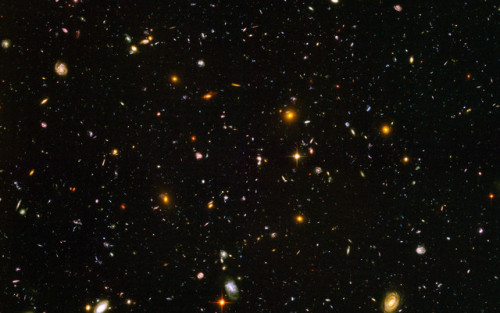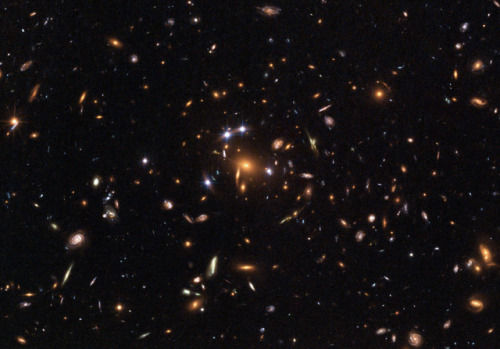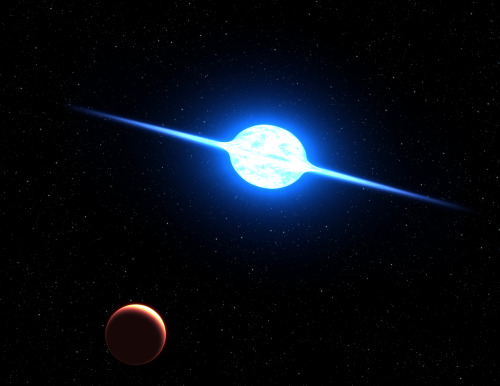Sidusglacies - ⚡️

More Posts from Sidusglacies and Others

An total solar eclipse, 1905, observed from Palma, Balearic Islands, Spain, illustrated by Major Baden-Powell.

Polar Vortex Disruption Of January 2013
Satellite imagery of the disruption of the polar vortex in the northern hemisphere winter 2012-2013. The data show a major stratospheric sudden warming (SSW) event, linked to the distortion and reversal of the normal westerly (moving west to east) flow of air.
The large vortex (bright) over the North Atlantic Ocean at the start of the clip breaks up into several smaller vortices. This is due to air from lower latitudes (dark) becoming entrained in the polar flow, forming an anti-cyclonic region (dark, rotating clockwise) over Japan and eastern Russia, which disrupts the flow across the region.
Learn More About The Polar Vortex
Although dramatic, such events are not rare, occurring every two years on average. They can cause winds to reverse near the surface too, leading to very cold spells, especially in North America and Europe.
The brightness indicates the potential vorticity of the air, a measure of its rotation within its flow, at an altitude of 35 kilometers. Brighter regions have more vorticity.
A major SSW occurs when the temperatures in the stratosphere around the pole increases by at least 25 Kelvin within a week, causing the wind to change direction.
The data were gathered by the GEOS-5 satellite every hour between 15th December 2012 and 28th January 2013.
© GMAO / GSFC / NASA / Science Source

07/04/20





The Fermi Paradox
Once upon a time, scientists decided, “what would happen if we point Hubble at this dark piece of the sky and leave the exposure open for an absurd amount of time?” Said scientists then experienced sudden bowel incontinence from the results. Vast specks of light, like the first image and when zoomed in, each individual speck of light is it’s own galaxy with it’s own solar systems.
Seeing the sheer vastness of the universe and that it’s so large, it’s incomprehensible to our feeble minds, is it possible that we’re alone? Where are all the aliens?
The Fermi Paradox tries to describe why we seem to be alone in a vast sea of endless possibilities for intelligent life to form. Life seems to form easily, surely it’s the same elsewhere.
Here’s some main bullet point arguments as to why we’re seemingly alone.
• We’re too far apart, separated by vast space and time • We’re rare or we’re the first • The aliens don’t have advanced technology (we don’t either). Think of it this way, an octopus or a crow is intelligent life. They’ve never even visited the moon. • Mass extinctions happen more often than not, they might be dead or intelligent life never exists long enough to make contact with each other before it’s wiped out • We haven’t existed long enough to be discovered or to figure out how to find others • They’re too advanced for us • It’s simple nature of intelligent life to eventually wipe itself out • Intelligent life has discovered that it’s too dangers to be in contact • We’re not listening properly for their messages. It’s like trying to listen to a CD on a record player - it won’t work. • We’re not contacted because we’re in a simulation or an alien zoo • Maybe they’re already here, observing • Maybe they’re here (e.g. UFOs?) we just don’t know how to talk to them or acknoweldge them. We laugh at most UFO reports.

Comet Hyakutake
I would choose you in every life;
time after time, we meet again.

The North America Nebula, NGC 7000 // DaydreamAstro


The Poles of Mars.
L: The North Pole, pictured down to the equator R: The South Pole, in more detail
Credit: ESA

This is an artist’s concept of the fastest rotating star found to date. The massive, bright young star, called VFTS 102 rotates at about two million kilometres per hour. Centrifugal force from this dizzying spin rate has flattened the star into an oblate shape, and spun off a disk of hot plasma, seen edge on in this view from a hypothetical planet. The star may have “spun up” by accreting material from a binary companion star. The rapidly evolving companion later exploded as a supernova. The whirling star lies 160 000 light-years away in the Large Magellanic cloud, a satellite galaxy of the Milky Way.
Credit: NASA/ESA and G. Bacon (STScI)
-
 viatori reblogged this · 6 months ago
viatori reblogged this · 6 months ago -
 wintrii-shadows liked this · 9 months ago
wintrii-shadows liked this · 9 months ago -
 blazey-blase-blah reblogged this · 1 year ago
blazey-blase-blah reblogged this · 1 year ago -
 corihasastory liked this · 1 year ago
corihasastory liked this · 1 year ago -
 fat-reik liked this · 1 year ago
fat-reik liked this · 1 year ago -
 battyyy reblogged this · 1 year ago
battyyy reblogged this · 1 year ago -
 planetchsky reblogged this · 1 year ago
planetchsky reblogged this · 1 year ago -
 theblackgooseberry reblogged this · 1 year ago
theblackgooseberry reblogged this · 1 year ago -
 a-silent-touch liked this · 1 year ago
a-silent-touch liked this · 1 year ago -
 keatsonthebeach liked this · 1 year ago
keatsonthebeach liked this · 1 year ago -
 riddlemethispoetry reblogged this · 1 year ago
riddlemethispoetry reblogged this · 1 year ago -
 riddlemethispoetry liked this · 1 year ago
riddlemethispoetry liked this · 1 year ago -
 cannamermaid reblogged this · 1 year ago
cannamermaid reblogged this · 1 year ago -
 jaibajaja reblogged this · 1 year ago
jaibajaja reblogged this · 1 year ago -
 leestoner liked this · 1 year ago
leestoner liked this · 1 year ago -
 maudlin-queer reblogged this · 1 year ago
maudlin-queer reblogged this · 1 year ago -
 angstpenis reblogged this · 1 year ago
angstpenis reblogged this · 1 year ago -
 crates-n-808s liked this · 1 year ago
crates-n-808s liked this · 1 year ago -
 minnie-mystery reblogged this · 1 year ago
minnie-mystery reblogged this · 1 year ago -
 minnie-mystery liked this · 1 year ago
minnie-mystery liked this · 1 year ago -
 thegirlwiththemissingheart liked this · 1 year ago
thegirlwiththemissingheart liked this · 1 year ago -
 perfectly--misaligned reblogged this · 1 year ago
perfectly--misaligned reblogged this · 1 year ago -
 hop-water-music reblogged this · 1 year ago
hop-water-music reblogged this · 1 year ago -
 hop-water-music liked this · 1 year ago
hop-water-music liked this · 1 year ago -
 nighth0wl reblogged this · 1 year ago
nighth0wl reblogged this · 1 year ago -
 gnlives liked this · 1 year ago
gnlives liked this · 1 year ago -
 insomniaddict1 reblogged this · 1 year ago
insomniaddict1 reblogged this · 1 year ago -
 freestsoulintheverse reblogged this · 1 year ago
freestsoulintheverse reblogged this · 1 year ago -
 freestsoulintheverse liked this · 1 year ago
freestsoulintheverse liked this · 1 year ago -
 alienshifter reblogged this · 1 year ago
alienshifter reblogged this · 1 year ago -
 iseetheworldinmetaphor liked this · 1 year ago
iseetheworldinmetaphor liked this · 1 year ago -
 let-the-dominoes-fall reblogged this · 1 year ago
let-the-dominoes-fall reblogged this · 1 year ago -
 princesspouty reblogged this · 1 year ago
princesspouty reblogged this · 1 year ago -
 novazan reblogged this · 1 year ago
novazan reblogged this · 1 year ago -
 novazan liked this · 1 year ago
novazan liked this · 1 year ago -
 thewanderingroot liked this · 1 year ago
thewanderingroot liked this · 1 year ago -
 moonygyal liked this · 1 year ago
moonygyal liked this · 1 year ago -
 moonygyal reblogged this · 1 year ago
moonygyal reblogged this · 1 year ago -
 queerandlonelyx reblogged this · 1 year ago
queerandlonelyx reblogged this · 1 year ago -
 handowls reblogged this · 1 year ago
handowls reblogged this · 1 year ago -
 unicorn-cupcake-lace reblogged this · 1 year ago
unicorn-cupcake-lace reblogged this · 1 year ago -
 wiionetwo34 reblogged this · 1 year ago
wiionetwo34 reblogged this · 1 year ago -
 wiionetwo34 liked this · 1 year ago
wiionetwo34 liked this · 1 year ago -
 jungrl liked this · 1 year ago
jungrl liked this · 1 year ago -
 psychedelic-sagittarius reblogged this · 1 year ago
psychedelic-sagittarius reblogged this · 1 year ago -
 psychedelic-sagittarius liked this · 1 year ago
psychedelic-sagittarius liked this · 1 year ago
